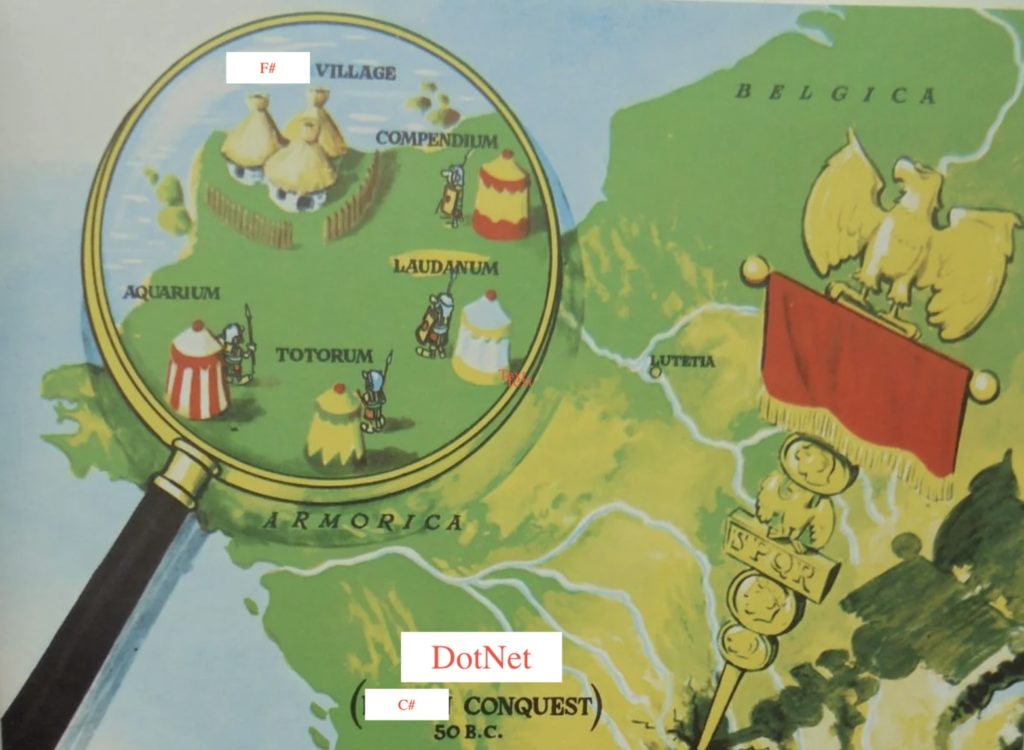This site will be dedicated to my efforts to create apps and programming libraries that deliver medical decision support.
Taming the Brown Field with F#: Interactive Refactoring for Mature Codebases
Introduction
If you’ve read the previous Informedica post on F# Interactive (FSI) and why it’s a powerful tool in your development toolbox, then this post takes the next step. The first post introduced what FSI is and why it’s useful. This post shows how you can harness it practically on a brown-field project such as GenPRES.
Most of us don’t work in green-field environments where code is written fresh and clean. Instead, we struggle with brown-field codebases—systems that have grown over years, accreted complexity, and become mission-critical. Changing code in these environments is often intimidating: any modification risks unexpected consequences somewhere else in the system.
This is exactly where F# Interactive (FSI) becomes a superpower.
Continue reading “Taming the Brown Field with F#: Interactive Refactoring for Mature Codebases”
![]()
Working with F# Interactive (FSI): A Development Workflow
F# Interactive (FSI) has fundamentally changed how I approach software development. Rather than the traditional edit-compile-run cycle, FSI enables a direct, conversational/interactive approach to coding that eliminates friction and accelerates development. This post explores the practical advantages I’ve discovered through years of FSI-first development using F# script files.
Continue reading “Working with F# Interactive (FSI): A Development Workflow”
My beef with Copilot
I feel that a lot of time Copilot and I do not agree on F# code. Recently, I had the following discussion about this code file:
Continue reading “My beef with Copilot”
![]()
F#un with Advent Of Code 2024 day 1
I may not be the most qualified, but I’m having a lot of F#un with Advent of Code 2024 (AOC)! It’s incredible how F# enables you to focus on problem-solving, making the experience even more enjoyable.
I had heard about AOC in the past but always dismissed it, thinking I was too busy and should prioritize solving “real-world” problems. However, tackling these challenges has proven to be a great learning experience—and, as it turns out, quite addictive once you earn that first gold star! ⭐
Continue reading “F#un with Advent Of Code 2024 day 1”
![]()
The State of F#: Obelix and Asterix
When I think about the state of F#, it reminds me of one of my favourite comic book series, Asterix and Obelix.

Continue reading “The State of F#: Obelix and Asterix”
![]()
F# Compilation Speed
Just recently, I was watching the fsharpConf2023. There was a very interesting talk from the CEO of Darklang, Paul Biggar. Darklang was originally created using OCaml. Later on they decided to switch to F# and the talk is about their experience with F#. Paul Biggar specifically discussed the goods and the bads of F# as a language to use in production. One of the comments that stood out to me was the compilation speed of F#.
Continue reading “F# Compilation Speed”
![]()
The MetaVision Copy Tool
In the intensive care unit of the hospital where I work (the University Medical Center Utrecht), we rely on a Patient Data Management System (PDMS) called MetaVision. This system stands out for its exceptional configurability, making it an invaluable tool. With MetaVision, we have the ability to define and fine-tune various aspects, allowing for a truly customized system. The fundamental building block of this system is a parameter, which can be displayed and utilized across menus, graphs, tables, forms, and more. These parameters can store various data types, including text, numbers, dates, and more. Additionally, VB.NET scripts can be employed to further enhance and extend the functionality of these parameters.
Continue reading “The MetaVision Copy Tool”
![]()
Trees
A tree is a very common datastructure. I stumbled upon this subject because of a requirement that is needed for a mathematical solution. This solution needs to keep track of changes that start with a single change but can have multiple effects. Each effect, i.e. change, can result in turn into multiple changes, hence the need of a tree structure.
![]()
Feliz React components
I have been looking for a best practice to create a major single page application using the excellent Feliz library. I also heavily borrowed ideas from a book by the author of Feliz, Zaid Ajaj. The application in mind is intended to be the Dutch National Pediatric Emergency app used for acute interventions in pediatric medical emergencies. The main purpose of the application is to provide all calculations necessary based on age and weight of the patient.
Informedica Software Development
Software development for Informedica has been a one man show. Maybe that’s about to change. However, this means that the development process has to change as well. In this blog I propose a development process to enable this change. The fork and pull model will be used to cooperate.
